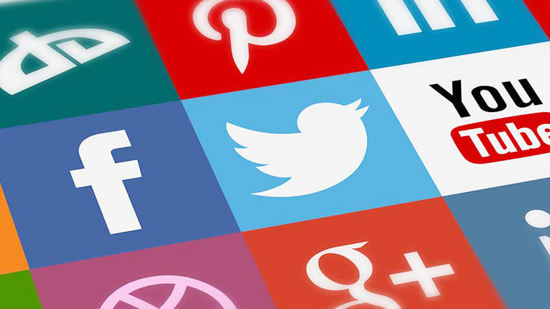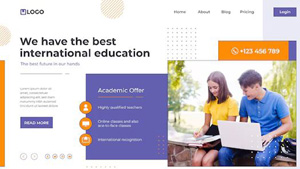In today’s digital age, social media has infiltrated almost every aspect of our lives, including education. With its widespread popularity and accessibility, social media presents a unique opportunity to enhance learning experiences and engage students in a way that traditional teaching methods may not be able to achieve. From online discussions and collaborative projects to educational videos and resources, social media platforms offer a wealth of tools and opportunities for both students and educators alike.
Embarking on this digital journey, educators can leverage social media’s extensive reach and user-friendly interfaces to create interactive learning environments that foster creativity, collaboration, and critical thinking. By incorporating social media into the classroom, teachers can tap into students’ digital literacy skills, encouraging them to become active participants in their own education.

Photo by educationcorner
Utilizing social media platforms also gives students the chance to develop essential digital citizenship skills, such as responsible online behavior and effective communication. Additionally, social media can help bridge the gap between students, creating a sense of community and belonging in both traditional and virtual classrooms.
As the world becomes increasingly connected, harnessing the power of social media in education is not only necessary but also beneficial for preparing students for the challenges of the digital future.
Benefits of incorporating social media in education
Social media offers numerous benefits when incorporated into education. Firstly, it provides a platform for students to collaborate and engage in meaningful discussions beyond the physical classroom. Through online forums and group chats, students can exchange ideas, share resources, and work on projects together, fostering a sense of teamwork and encouraging critical thinking. Social media platforms often have features that allow for real-time feedback and peer assessment, enabling students to learn from each other and develop valuable communication skills.
Secondly, social media can enhance student engagement by presenting information in a more interactive and visually appealing manner. Educational videos, infographics, and other multimedia content can capture students’ attention and make learning more engaging and memorable. By incorporating social media, educators can leverage the power of visual and interactive content to cater to different learning styles and preferences, ultimately improving student comprehension and retention of knowledge.
Social media can provide a bridge between the classroom and the real world, exposing students to a variety of perspectives and global issues. By following relevant accounts, connecting with experts in the field, and participating in online communities, students can gain valuable insights and broaden their horizons beyond the confines of their immediate surroundings. This exposure to different ideas and cultures fosters tolerance, empathy, and a global mindset, preparing students to become responsible and active citizens in an interconnected world.
Examples of successful social media use in education
Numerous schools and institutions have successfully integrated social media into their educational practices. One notable example is the use of Twitter in the classroom. Educators often create class-specific hashtags, allowing students to easily share and discuss relevant content. This not only encourages collaboration and active participation but also helps develop concise and effective communication skills. Teachers can also use Twitter to share resources, assignments, and important announcements, ensuring that students have access to information in a timely manner.
Another example is the use of YouTube in education. Many educators create their own educational channels or curate existing content to supplement classroom instruction. YouTube offers a vast library of educational videos on various subjects, catering to different learning styles and providing additional explanations and examples. Teachers can assign videos as homework or use them as supplementary materials during lessons, enhancing student understanding and engagement.
Platforms like Edmodo and Google Classroom have gained popularity in recent years. These platforms allow educators to create virtual classrooms, where students can access resources, submit assignments, and engage in discussions. They provide a centralized hub for communication and collaboration, making it easier for teachers to manage coursework and engage with students outside of regular class hours.
Challenges and concerns of using social media in education
While social media offers numerous benefits, it is not without its challenges and concerns. One major concern is the potential for distractions and misuse. Students may be tempted to use social media for personal purposes during class time, leading to a loss of focus and productivity. There are concerns about cyberbullying and inappropriate behavior. Educators must establish clear guidelines and rules regarding social media use in the classroom to mitigate these risks.
Privacy is another significant concern. Social media platforms often collect and analyze user data for targeted advertising and other purposes. This raises questions about the privacy and security of students’ personal information. Schools and educators must ensure that appropriate measures are in place to protect students’ privacy and comply with relevant regulations.
There may be a digital divide among students, with some lacking access to reliable internet or devices. This can create inequalities in terms of access to educational resources and opportunities. Educators must be mindful of these disparities and find ways to provide alternative means of accessing and engaging with social media content for all students.
Best practices for using social media in the classroom
To effectively incorporate social media into education, educators should follow some best practices. Firstly, it is crucial to establish clear guidelines and expectations for social media use. Educators should communicate the purpose of using social media in the classroom and outline the expected behavior and boundaries. This ensures that students understand how to use social media responsibly and effectively for educational purposes.
Secondly, educators should provide guidance and support to students regarding digital citizenship and online safety. Students need to be aware of the potential risks of social media and understand how to protect themselves and their personal information. Educators can incorporate lessons on digital literacy, online etiquette, and responsible behavior to equip students with the necessary skills to navigate social media platforms safely and responsibly.
Educators should select social media platforms that align with their educational goals and objectives. Different platforms offer different features and functionalities, so it is important to choose ones that best suit the desired learning outcomes. Educators should also familiarize themselves with the privacy settings and security features of the platforms to ensure the safety of students’ information.
Social media platforms for educational purposes
There are numerous social media platforms that can be used for educational purposes. Facebook groups can be created to facilitate discussions and resource sharing among students. Instagram can be used to showcase student work or create visual portfolios. LinkedIn can be leveraged to connect students with professionals in their field of interest. Each platform offers unique features and benefits, so educators should explore and experiment with different platforms to find the ones that best meet their specific needs and goals.
Case studies of schools and institutions using social media effectively
Several schools and institutions have successfully integrated social media into their educational practices. For example, the University of Texas at Dallas used Twitter to enhance student engagement in a large lecture course. By creating a class-specific hashtag and encouraging students to live-tweet during lectures, the university saw increased student participation and discussion both during and after class. This approach not only fostered a sense of community but also provided an opportunity for students to ask questions and receive real-time feedback from the professor.
Another example is the use of blogging platforms in language learning. Many language teachers have utilized platforms like WordPress or Blogger to create class blogs where students can practice writing, share their work, and receive feedback from their peers. This not only improves students’ writing skills but also encourages active reflection and critical thinking.
Tools and resources for educators to leverage social media
There are various tools and resources available to educators looking to leverage social media in education. Social media management platforms like Hootsuite and Buffer can help educators schedule and manage posts across multiple social media platforms. These platforms offer features such as analytics and post scheduling, making it easier for educators to track engagement and plan their social media content.
There are numerous educational apps and websites that integrate social media features. For example, Flipgrid allows educators to create video discussions and assignments, encouraging students to share their thoughts and engage in meaningful conversations. Padlet is another popular tool that allows students to collaborate and share resources in a visually appealing and interactive manner.
How social media can enhance student engagement and collaboration
Social media has the potential to greatly enhance student engagement and collaboration. It provides a platform for students to connect and interact with their peers, both within and outside the classroom. Through social media, students can share their ideas, ask questions, and receive feedback from a wider audience. This fosters a sense of community and belonging, encouraging students to actively participate and take ownership of their learning.
Social media platforms often have features that promote collaboration, such as group chats, discussion boards, and collaborative document editing. These tools allow students to work together on projects, share resources, and provide support to one another. By leveraging these collaborative features, educators can create dynamic and interactive learning environments that encourage teamwork and critical thinking.
Conclusion
Social media offers a multitude of benefits when incorporated into education. It provides opportunities for collaboration, enhances student engagement, and fosters the development of essential digital citizenship skills. However, it is important to address the challenges and concerns associated with social media use in education, such as distractions, privacy, and the digital divide.
As technology continues to advance, the integration of social media in education is likely to evolve. Future trends may include the use of virtual reality and augmented reality to create immersive learning experiences, the incorporation of artificial intelligence to personalize and adapt educational content, and the development of new social media platforms specifically designed for educational purposes. By staying informed and adapting to these trends, educators can continue to harness the power of social media to enhance learning and prepare students for the digital future.
This blog article has explored the various ways social media can be used in education, highlighting the benefits, challenges, and best practices for its implementation. By incorporating social media into the classroom, educators can create interactive learning environments, foster collaboration, and develop essential digital citizenship skills. With the right strategies and tools, social media has the potential to greatly enhance student engagement and prepare students for the challenges of the digital future.



